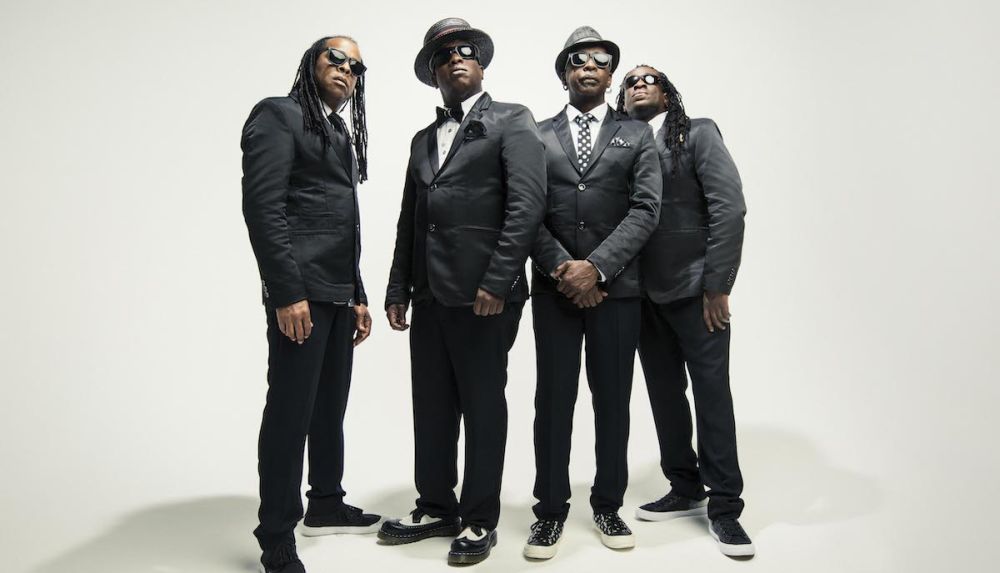As every high school history student knows, legal segregation ended in America in 1964. But there is one area where such segregation has persisted, albeit covertly, and that is in popular music.
Like it or not, country, rock, rap, and soul music continually get categorized by race on mainstream radio. Of course, there are always exceptions who defy the rule of thumb: Jimi Hendrix, Kenny Hoopla and Lil Nas X have all crossed the imaginary barriers. Things have changed a bit in the era of streaming and Tik Tok, when artists like BTS, Bad Bunny and Lil Uzi Vert reign supreme across the airwaves…or at least across the internet.
But in the 1960s, ’70s and ’80s, rock bands in particular were overwhelmingly white. It wasn’t until Living Colour emerged that the unofficial color line around rock music was even noticed, much less discussed. The band, which featured four black musicians playing hard rock songs with no rapping, was often dismissed by critics as sounding “too white.” In 1989, the success of their album Vivid helped to singlehandedly destroy the unspoken taboo that kept Black artists from playing so-called “white rock” in white spaces like music festivals, alternative radio and MTV.
It’s hard to overstate how radical Living Colour’s presence in the alt-rock scene of the early 1990s was—or how difficult it was to reach that place. From their start (1984), the band faced resistance, accusations of “stealing white idioms,” and of not rapping, beat-boxing or singing soul music.
In the new book Time’s Up, about the making of Living Colour’s second album, author and professor Kimberly Mack traces the band’s quest to integrate the whitest spaces of rock music, interviewing them and describing how their music liberated her own listening tastes from the tyranny of race-based judgments.
“From the moment I heard (them), I was awed,” she recalls. “I was so emotionally affected—it was a way for me to get in touch with my own anger.”
The band themselves had plenty to be angry about. Even though their demo tape was produced by Mick Jagger, it was rejected by countless record companies who felt they wouldn’t fit in the established scene.
It took Living Colour four years to get signed to a major label. Eventually, Vivid, their debut, sold two million copies and reached number six on the Billboard Top 200 chart. The song “Cult of Personality” even won a Grammy for best Hard Rock Performance. All of it was a testament to the hard work of guitarist Vernon Reid, one of the co-founders of the Black Rock Coalition, an organization created in reaction to the treatment of Black artists in the commercial music industry.
Mack is a professor of literature at the University of Illinois Champagne who previously wrote Fictional Blues: Narrative Self-Invention from Bessie Smith to Jack White. Time’s Up is her second book, part of the popular 33 1/3rd series. Having grown up in Brooklyn’s Marcy Housing Projects, Mack says she chose Time’s Up because, though she loved listening to rock music, she always felt distanced. Often, she says, hers was the only non-white face in the audience.
Mack recalls being taken, at age 11, to Madison Square Garden to see Cheap Trick and feeling secretly proud when the band played “Ain’t That A Shame” by Fats Domino, who she knew was Black. A similar thing occurred at a Van Halen concert when the band played John Brim’s “Ice Cream Man.”
In 1989, Living Colour opened for the Rolling Stones “Steel Wheels” tour. That visibility helped them up the charts, and opened the door for later acts like TV on the Radio and Rage Against the Machine, finally moving commercial music towards the diversity Living Colour was always pushing for.
Today, Mack says, the gatekeeping around genres isn’t quite as rigid, but it still does exist.
“I have heard that there are a lot of Black and brown kids in the punk and hardcore scene now. But my sense is that from a mainstream perspective, people still see rock as white.”
Living Colour, she adds, have nonetheless had a huge impact on the world of rock, and deserve to be rediscovered by a new generation.
“To me, this music always feels fresh,” she says. “I don’t know how that is, but it never gets old…it is just as relevant as ever.”
Living Colour will co-headline this year’s Music in the Park opening show at the Plaza de Cesar Chavez in downtown San Jose on July 21 starting at 5pm. An affiliate of this newspaper is producing this year’s music series.
Tickets available at wklys.co/mitp_jul



